To state the obvious, if you expect to catch anything, you want to choose the best bait for salmon fishing. More easily said than done, but let’s see if we can uncomplicate this a bit.
Salmon fishing is a popular angling sport in North America, and in fact, all over the world. In places as diverse as New York, California, Alaska, Europe, and Australia, this popular sport fishing species is found.
The term “salmon” covers several species of fish, all of which are anadromous — they hatch and live most of their lives in freshwater rivers, and then return to the ocean to spawn.
The most common types of salmon that are fished for in North America are Chinook or king salmon, coho or silver salmon, sockeye or red salmon, and pink or humpback salmon.
All these species of salmon are prized for their fighting ability and excellent taste.
If you’re new to salmon fishing, the task of choosing the best bait can be daunting. There are so many different types of bait available, and all claim to be the “best” for catching salmon.
In this article, we will demystify the process of choosing bait for salmon fishing. We will provide you with 10 great options for baits that work well for Chinook, coho, and other common types of salmon in North America, as well as some suggestions for salmon fishing in Europe and Australia.
Hooks And Leaders for The Best Salmon Baits
Before we even get to the best salmon bait to use, we need to address the necessary tackle first.
When it comes to salmon fishing, the best salmon bait hook size depends on the type of bait being used, the conditions of the water, and of course the species that you are targeting.
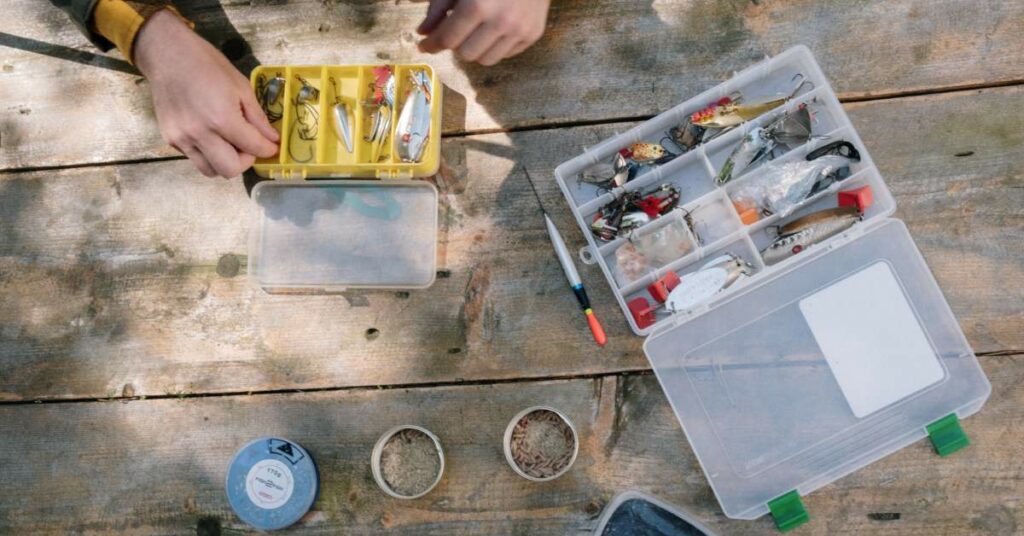
For example, if you are fishing from the shore in a river with a softer bait such as a spawn bag, a shorter shank and wide gap hook would be the best option. This type of hook allows the bait to fit within the green area on the hook, which helps keep the hook gap open and the hook point exposed.
On the other hand, if you are using firmer bait such as power bait, a slightly larger hook is suggested to prevent the bait from covering the hook point and impeding the hook from entering the salmon.
Additionally, the larger hook should be strong enough to withstand a big salmon, and black- or bronze-colored hooks are preferred over gold, silver, or brightly colored hooks.
Ultimately, matching the size of the hook to the size of the bait is the key to ensuring that your bait can flow naturally with the current and remain in the strike zone.
Bait Placement
It is important to have the right bait placement and hooking techniques to maximize your chances of catching salmon. Here are some of the best tips for bait placement and hooking for salmon fishing:
- When using soft baits like spawn bags or power bait, make sure to place the bait directly over the hook point, but not in a way that closes the gap between the hook point and shank.
- Make sure not to blur the hook point into the bait. It is important that the hook point is not covered as this can prevent soft-biting fish from getting hooked or can impede the hook from going into the fish.
- When using a plunking rig, attach a swivel at the end of the main line and add a short dropper with a lot of weights to keep the bait in one place.
- Attach a leader to a swivel, which should be 2-6 ft long, depending on location and position. Attach a lure that makes some motion, like a metal spoon or similar.
- For anchor fishing, drop an anchor and use KwikFish or another type of plug wrapped in bait in areas that need lead to get to the bottom.
- Finally, when rigging your bait, make sure to use the appropriate method for the type of bait you are using. For example, when using live bait, rig the fish through the nostrils or anal vent, and when using roe, tie them into a bag and attach the bag to the hook.
By following these tips and using the right bait and hooking techniques, you can increase your chances of success when fishing for salmon.
Fishing for Salmon in Rivers
Salmon river fishing is a little different than saltwater fishing for salmon. And of course, the bait matters. Let’s get into it…
Best Bait for Salmon Fishing in the River
When it comes to salmon fishing in the river, there are several baits that can be used to good effect. Salmon eggs, dough baits, sand shrimp, herring and minnows are all excellent options.
Salmon eggs are considered the best salmon bait, as the scent of the eggs attracts salmon during spawning season. Dough bait is a viable alternative, and it even has a smell and tastes similar to salmon eggs.
Sand shrimp is ideal for Chinook salmon, while herring and minnows are effective options as well. There is no one-size-fits-all approach when it comes to salmon fishing in the river, so it pays to experiment with different baits and techniques to find what works best.
Drift Fishing
Drift fishing is an effective technique for fishing for salmon in rivers. To practice this technique, anglers cast their line upstream and let the current take the bait downstream. When the bait reaches a calmer area such as a pool, the angler can then reel the line in and cast again. To ensure the bait flows with the current, it’s important to use the correct weights.
When side drifting, anglers cast upstream and let the line drift until it’s just out of the run or pool, and then they cast up again. The idea is to cover all of the water, working from the shore out into the pool. This is a great technique for catching salmon, and it’s similar to drifting.
Plunking is another technique that can be used to catch salmon. For this technique, anglers cast into the area where the fish gather and leave the bait on the spot. Plunking can be done from shore and from a boat, and active lures are often used.
Drift mooching is another popular salmon fishing technique, especially in the summer months. To practice this technique, the boat’s motor is turned off and the boat is allowed to drift with the current. Bait is then lowered into the water with a weight, and the angler waits for the salmon to bite.
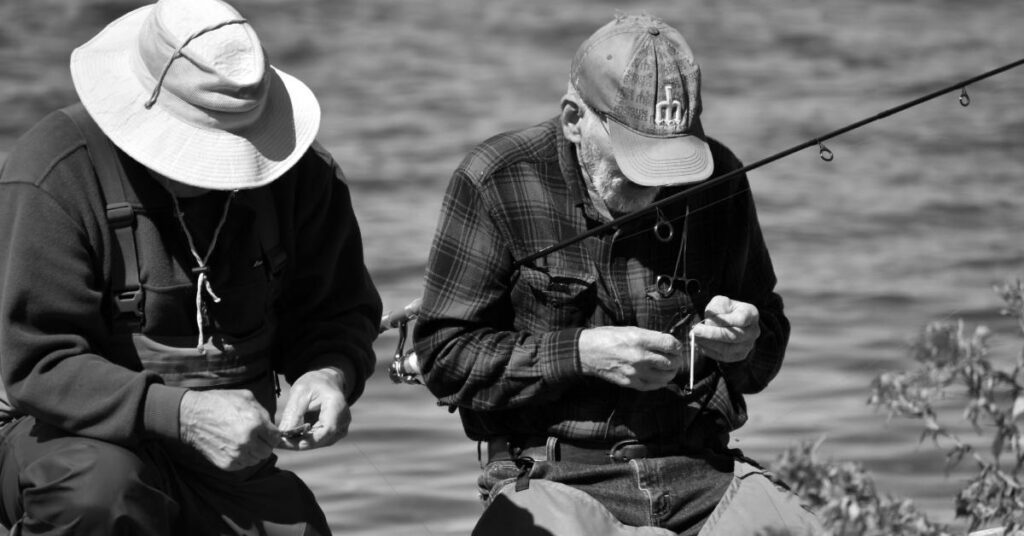
Anchor fishing is a straightforward technique. The idea is to drop an anchor and use KwikFish or another type of plug wrapped in bait in areas that need lead to get to the bottom. Chinook will aggressively chase a properly fished plug.
Back trolling is another technique that can be used to catch salmon. Anglers position their bait at a desired depth by using weights, divers, or downriggers. The boat must be moving at a consistent speed, and it’s best to pick a location with a slower river flow, such as the lower end of a large and spacious river.
Bobber fishing is a simple technique suitable for beginners. It is often used in still or slow-moving waters. The setup includes a floating line with a sliding float, weight, and a two-foot leader tied to the bait or lure.
To ensure the bait stays in the salmon’s face, use a bobber stop to set the sliding float at a specific depth. Salmon usually hang out suspended above the bottom at night, so bobber fishing can be particularly effective during this time.
Side Drifting
Side drifting is a variation on drift fishing, where anglers cast upstream and the current takes the bait downstream. This technique is primarily a boat tactic and is used to cover more water, with multiple anglers using the same setup.
This setup involves using weights that are not too heavy or too light, so that the bait can flow naturally with the current. In side drifting, the idea is to take a simple setup and cast as the boat drifts down through a hole or pool. By working from the shore out into the pool, anglers can cover more water and increase the chances of catching salmon.
Other common salmon fishing techniques include float, or bobber, fishing, plunking, mooching, and anchor fishing. Float fishing requires a longer rod and a sliding float, weight, and a 2-foot leader tied to the bait or lure. Plunking is done from shore or a boat and calls for active lures.
Mooching is done by running the boat’s motor off and letting it drift with the current, and anchoring in place and then using KwikFish or another type of plug wrapped in bait. Lastly, back trolling is a tactic that works well and lets you slow down on the drop-offs where the salmon are holding.
Plunking
Plunking is a fishing technique used to catch salmon in rivers. It involves the use of a weighted lure, such as the KwikFish, that is wrapped in bait such as a fillet of sardine.
A 9-foot extra heavy action rod with heavy line is used, along with a swivel or slider, a 4- to 6-foot leader, and a weight heavy enough to hold the offering in one place. The lure is then cast into the active fish lanes and left to sit until a fish takes the bait or the lure is changed.
For best results, select brightly colored baits such as chartreuse or fluorescent colors like pink and orange.
Plunking can be done from both the bank and a boat. When fishing from the bank, look for calmer pools above faster sections, while when fishing from a boat, target the edges of the main channel where the water is a bit slower.
Spoons are some of the most popular lures for plunking and should be matched to the speed and depth of the river.
Bobber or Float Fishing
Fishing with a bobber or float in rivers can be an effective and rewarding way to target salmon. The three most popular methods for bobber or float fishing in rivers are float fishing, drift fishing, and trolling.
Float fishing requires a longer rod, usually 10-12 feet with a floating line. To set up this method, you will need a sliding float, weight, and a 2-foot leader tied to the bait or lure. Use a bobber stop to set the sliding float at a desired depth.
The salmon are usually at a certain depth, so the more time your bait is in their face, the better. Salmon hang out suspended above the bottom at night, moving to the bottom when the sun comes up, so you will need to adjust your bobber stop to accommodate the depth changes. Bring along salmon eggs and sand shrimp if targeting Chinook, or jigs like the Marabou jig for pinks and cohos, or for very clear, low water.
Trolling
Trolling is a fishing technique used to catch salmon in rivers. It involves using a boat that is constantly moving at a steady speed, with weights, divers, or downriggers used to position the bait at the desired depth. It is most successful when fishing in the lower end of a large and spacious river, as this will have a slower river flow which is ideal for trolling.
Common lures such as wobbling lures, spinners, and plugs are used, along with live bait such as herring fillets and prawns. In-line flashers and KwikFish with wrapped bait are also popular. Anchor fishing and back trolling are two more techniques that can be used when trolling.
All of these techniques require patience and an understanding of the salmon’s behaviors in order to be successful. By casting ahead of the salmon, allowing the bait to move slowly to match the fish, and maintaining a steady speed, anglers have a good chance of catching salmon when trolling.
Casting Spinners and Spoons
Casting spinners and spoons can be very effective when targeting salmon. Examples of spinners can include large casting style (weighted) spinners, such as the Little Cleo from Acme, which mimics a fat, injured baitfish, as well as bright spinners that produce a lot of vibration.
Spinners should be used when targeting water that is less than five feet deep and should be cast into backwater eddies and relatively soft currents. Varying the retrieval speed and making direction changes can help entice a strike.
Examples of spoons can include the Kastmaster, which is excellent for salmon, and can be retrieved with a slow, low drag or a fast, twitchy, aggressive return. Thinner spoons work best, and those with blue or green markings often catch the most fish.
Steelhead Slammer Spinners are also a great option, as they are handcrafted in Oregon and designed by a river angler with a passion for quality gear. They have a low-profile brass body that sinks fast into the strike zone.
Wobbler Fishing for Salmon
Wobbler fishing is a technique used to target salmon that are holding deeper in the water. It typically consists of a five-foot weight dropper line and a five-foot leader, with anywhere from 2 to 24 ounces of lead depending on the depth and current.
The angler needs to have some current to impart the proper action on the lure, but the water can’t be too fast. Plugs are a popular wobbler for salmon fishing and can range from banana-shaped to rattles and wobble-free.
Brad’s Wigglers are a great trolling, back-trolling, or casting lure for slower sections of rivers, as well as for lakes. Trolling can also be used in large rivers, using a variety of lures. Twitching jigs are also popular for Coho Salmon, while float fishing is best in slow-moving or slack water.
Anchor Fishing
Anchor fishing is a method used to fish for salmon in rivers. It involves dropping an anchor and using KwikFish or other plugs wrapped in bait in areas where a lead weight is needed to make it to the bottom. Chinook salmon, in particular, will aggressively chase this type of bait, as the bait and slow action of the plug spreads scent in the water.
Back trolling, or casting and waiting for a bite, is another commonly used salmon fishing technique that is similar to drifting. Plunking, which can be done from shore or a boat and typically uses an active lure, is also an option.
For drift fishing, anglers cast upstream and the current takes the bait downstream. Another popular method is trolling with downriggers, using baits like frozen anchovies or herring.
Finally, a sinker release rig with a two- to three-pound lead ball attached to the line can be used for those without downriggers. All of these methods can be highly effective for catching salmon.
Fly Fishing for Salmon
Fly fishing for salmon is a rewarding and challenging experience that requires the right gear, techniques, and understanding of the species. Salmon are migratory fish that travel long distances to spawn in fresh water and feed on smaller fish, crustaceans, and aquatic insects.
To be successful, it is important to choose the right gear, such as a fast-action rod with a weight-forward line to cast heavy flies. The key to success is to match the hatch by using fly patterns that imitate the natural food sources that salmon feed on in the area you are fishing.
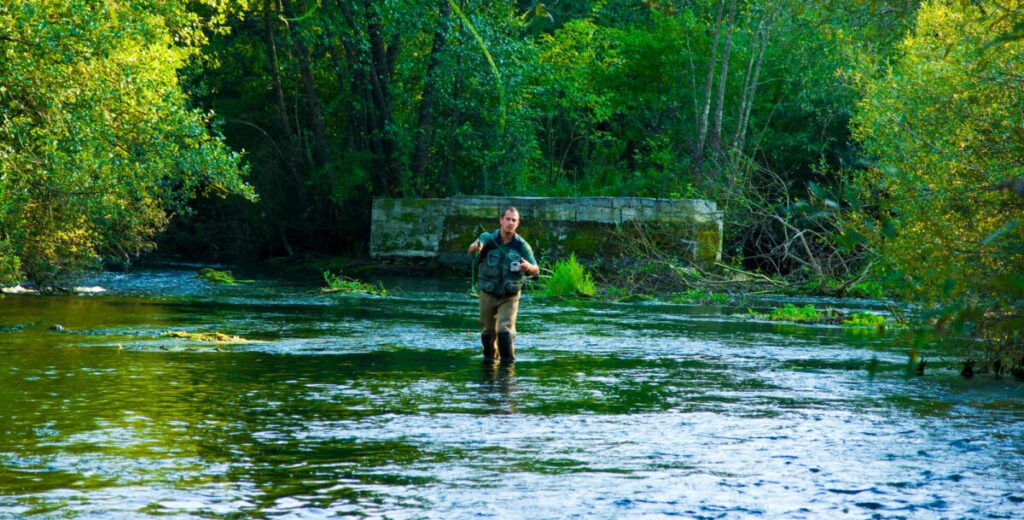
Pay attention to water temperature, as salmon are most active in cold water, and try fishing in the early morning or late evening when the water is at its coolest.
To catch salmon, it is also important to vary your retrieve, such as trying different retrieves such as a steady strip, a slow retrieve with pauses, or a fast strip-and-pause retrieve.
Fishing for Salmon in Saltwater
OK, what about fishing for salmon in saltwater? What are the differences, and what type of bait do you need?
The Best Bait for Salmon in the Ocean
When it comes to salmon fishing in the ocean, the best bait to use is oily strip and chunk baits. This includes Salmon, Mackerel, and Pilchards, either in chunks or fillets.
These baits are more effective than frozen fish and can be presented in a variety of ways, depending on the fishing conditions. For example, in areas with strong tidal currents, a dropper rig or paternoster rig can be used with minimal weight, while a heavier sinker might be needed when fishing from land.
In comparison to salmon fishing in rivers, where salmon eggs, dough bait, sand shrimp, herring, and minnows are all good options, the best bait for ocean salmon fishing is still oily strip and chunk baits. These provide the strongest scent and the best chances of a successful catch.
Fishing for Salmon with Salmon Eggs
Step 1: If you can get fresh salmon eggs, they are the best option as they provide the best scent to attract the salmon. If you don’t have access to fresh salmon eggs, artificial salmon eggs can work just as well, but you might try adding some artificial scent (see bottom section of this article).
Step 2: To fish with salmon eggs, attach a cluster of eggs to a small hook. Another option is to attach a hook to a small cork and use a piece of yarn – this is known as a ‘corky’ and it helps to keep the eggs floating off the bottom of the river, and the yarn helps to attract the salmon.
Step 3: If you are using salmon spawn sacks, they are pre-tied using Coho eggs and can easily be attached to the hook.
Step 4: Bait the hook with the salmon eggs and cast the line into the area you are fishing.
Step 5: Wait for a bite and, when you feel a tug, reel in the line and set the hook by pulling the rod sharply up and away from the water.
Fishing for Salmon with Shrimp
Using shrimp to catch salmon is a great way to target these prized fish. Here are the steps for using shrimp as bait:
- Buy your bait from a local tackle shop or catch them yourself with a casting net.
- Once the shrimp are purchased or collected, cut or tear off the tail end where it attaches to the upper body.
- Tie the shrimp onto the hook and drift it downstream.
- Alternatively, you can combine them with salmon skein or other lures.
- You can also back troll with the shrimp behind a diver in larger rivers.
- To keep the shrimp firm, you can also cure them in salt before using them as bait.
- Hook the shrimp onto the fishing line with the tail facing up for a more natural swimming action.
Fishing for Salmon with Squid
Using squid to catch salmon is a great way to increase your chances of success when fishing in Australian waters. To do this, you will need to cut the squid into small strips or chunks before using them as bait. Here are step-by-step instructions on how to best use squid to catch salmon:
- Use a sharp knife to cut the squid into small strips or chunks.
- Thread the squid onto a fishing hook and cast it out into the water.
- The wriggling tentacles of the squid will attract salmon from long distances.
- Wait for a salmon to take the bait, then reel it in.
- If you don’t have success, try changing the size of the bait or the depth of the water.
Using squid as bait can be an effective way to catch salmon in Australian waters. Note that there are two species of Australian Salmon: Eastern Australian Salmon (Arripis trutta) and Western Australian Salmon (A. truttaceus).
Fishing for Salmon with Rubber Worms
Rubber worms are an artificial bait made from soft plastic and commonly used for fishing for salmon. They come in different sizes from 3-4 inches long and can be any color, but pink and red are the most popular and effective.
The rubber worms have a unique paddle tail that gives them more action, making them attractive to salmon. They can be used in a variety of ways when fishing for salmon, such as swung across a pool at the end of a drift, reeled in, or even chased to the surface.
Other popular plastic baits for salmon include grubs and flies, Power Wigglers, Lil Hellgrammites, Savage Nymphs, and plastic leeches. Metal spoons are also commonly used and come in a variety of sizes and colors.
Fishing for Salmon with Live Worms
Using live worms to catch salmon is a great way to increase your chances of success. Here’s a step-by-step guide on how to do it:
- Choose your live worms. Popular choices include Mad River Steelhead Worms, Raven Plastic Worms, and 3–4-inch Berkely Steelhead or Trout Worms. Pink and red worms are the most effective colors.
- Now you are ready to start trolling. Trolling involves fishing while constantly moving, preferably in a boat. Move slowly and make sure the bait is constantly moving in the current.
- Cast the bait ahead of the salmon so that the smell can drift down to your target and attract the fish. This will allow the salmon to recognize the worms as a food source and move a long way to grab it.
- Try to match the movements of the salmon. This can be done by using weights or divers for the bait to reach a certain depth.
By following these steps, you should have no problem catching salmon with live worms. Good luck!
Fishing for Salmon with Crickets
Crickets can be a great bait for catching salmon. To get started, you will need some crickets, a rod, line and reel, and a weight. You can either use live crickets or artificial ones, such as the Berkley Gulp! Crickets.
Step 1: Tie the cricket to the end of your line using a slip knot or other knot of your choice.
Step 2: Attach a weight to your line, a few feet above the cricket. This will help the cricket sink to a greater depth and also keep the bait in one spot.
Step 3: Cast your line into a spot where salmon may be swimming. This could be a deep hole with slow-moving water or an area of clear water near a stream.
Step 4: Reel in the line slowly to bring the cricket close to the bottom. You can also jig the bait to make it move in a way that will draw the attention of the salmon.
Fishing for Salmon with Minnows
Using minnows to catch salmon can be an effective and rewarding method of salmon fishing.
- Make sure they are lively when you bait the minnows on your hook.
- Hook the minnow mid-body at the top of the back, so that it rides more horizontally in the current. Use a size 8 or 10 hook.
- Use a float to suspend the minnow in the water, or bottom-bounce in shallow runs and pockets.
- If you want to try drift mooching, run the boat’s motor off and let it drift with the current. Lower the bait in the water with weight and wait for the salmon to bite.
- If you’re fishing from the bank, cast your bait upstream and let it drift down through the run. Once it is below you and out of the run, cast it back upstream. Make sure to cover the entire pool from side to side until you pinpoint the best holding water.
- Use the proper drift setup, with a 9-foot, medium action rod rated for a 30-pound line (or 20- to 30-pound test for larger salmon like Chinook and chum). Attach a snap swivel on the mainline with a 24- to 48-inch leader tied to a single hook. Add a corky or drift bobber on the line above the hook, and a bit of yarn on the loop of the hook.
By following these steps, you should be able to successfully use minnows to catch salmon.
Fishing for Salmon with Flies
Step 1: You will need a double-handed rod that is 13 feet or longer, a salmon-specific fly reel with a spare spool, a floating line, and a sinking line, and flies ranging from size 12 to size 2.
Step 2: Choose a spot to cast. Depending on the type of salmon you are targeting, you may want to look for deep pools or fast-moving water.
Step 3: Cast your fly. For Coho Salmon and Chinook, a brightly colored streamer is your best bet. For Sockeye, try to pull the line through their mouths, hooking them with the fly.
Step 4: Reel in your salmon. This can take up to 25 or 30 minutes, so be prepared for a fight!
Step 5: Once the salmon is close to the net, carefully net it and safely release it. (Or not…)
Fishing for Salmon with Spoons
Step 1: Choose the right spoon for the job. Thinner spoons move more effectively than thicker ones, and uncolored spoons are effective, but those with blue or green markings often catch the most fish.
Step 2: Choose the right location. When targeting salmon with spoons, try casting them into backwater eddies and relatively soft currents.
Step 3: Adjust your retrieve speed. The retrieval speed will vary depending on water depth and speed. Strong currents need a slow retrieve, while in rocky waters, a quick pop at the start of your retrieve will help avoid snags and get the blades spinning properly.
Step 4: Experiment with the retrieve. Salmon like things to be a little twitchy, so add some variation and direction changes to your retrieve, and you’ll be more likely to entice a strike.
Step 5: Adjust your choice of spoon colors. Clear water is perfect for bright, light-colored spoons, while cloud cover and low-light situations call for darker-colored spoons.
Step 6: Watch for the bite. Keep in mind that just because salmon may be large, their strikes might not be. Learn the feel of a spinner on your line. If the pulsing feeling stops, or it feels like you’re pulling it through mud, set the hook.
Step 7: Cover water. Once you are zeroed in, start in the shallower water near the shore, then move out a few feet, continuing until you cover the entire section of water.
Fishing for Salmon with Beads
Fishing for salmon with beads is increasingly popular these days. Using a fly rod or fished under a bobber on spinning gear, it’s hard to deny the effectiveness of both hard plastic and soft beads.
When it comes to salmon fishing in rivers or oceans, the best beads to use are artificial salmon egg beads. Soft and hard plastic beads imitate the loose salmon eggs that drift in the current and often out-fish bigger spawn bags.
Glass beads come in many different colors and sizes and can also be used to imitate salmon eggs. Artificial salmon egg beads are a great alternative to natural salmon eggs, as they are inexpensive and can be stored indefinitely.
Each type of bead has its own advantages and disadvantages, so it is important to consider the conditions of the river or ocean before making a decision. Soft and hard plastic beads may be more effective for slower-moving waters, while glass beads may be better for faster-moving waters.
Artificial salmon egg beads are usually the most economical choice, and they also provide good visual feedback when fishing.
Ultimately, anglers should consider the specific conditions of the river or ocean, as well as the type of salmon they are fishing for, before deciding about which bead to use.
Spawn Bags for Salmon Fishing
Spawn bags are pre-tied bags filled with salmon eggs that are used as bait when fishing for salmon. They are an effective bait because salmon are naturally attracted to eggs as a food source.
Unlike other baits, spawn bags are directly associated with salmon eggs, thus making them more attractive to these fish.
Additionally, the prevalence of spawn bags amongst 90% of anglers has created a situation where salmon are more likely to be attracted to this bait than any other.
However, spawn bags are not always the best bait for salmon fishing. In fact, salmon can become accustomed to spawn bags in certain situations and might not be as responsive to them as they once were.
That is why anglers should consider using alternatives such as flies, beads, or pink worms. These baits are smaller, less intrusive, and often more effective when the salmon have become “smart” to spawn bags.
The size, color, and type of hook used with spawn bags can also make a big difference in fishing success. Most anglers prefer to use a size 10 or size 8 hook and the most effective colors are Natural or Yellow.
Additionally, using imitation egg clusters or single eggs can increase the chances of catching more salmon.
Ultimately, spawn bags are a great bait for salmon fishing, but anglers should not limit themselves to just one type of bait. It is important to be open to other options and to understand that the best bait for salmon fishing can sometimes be something different.
Best Salmon Bait Scent
What is the best salmon bait scent?
When it comes to salmon bait scent, there is no one-size-fits-all answer, as the best smell for each salmon depends on the species, location, and time of year. It comes down to trial and error in your area.
Bait scents can come as a liquid, a spray, or a gelatinous dip. They mimic the smells of certain types of live bait to be used on your artificial lures and other tackle.
Here are some of our recommendations that are currently available on Amazon:

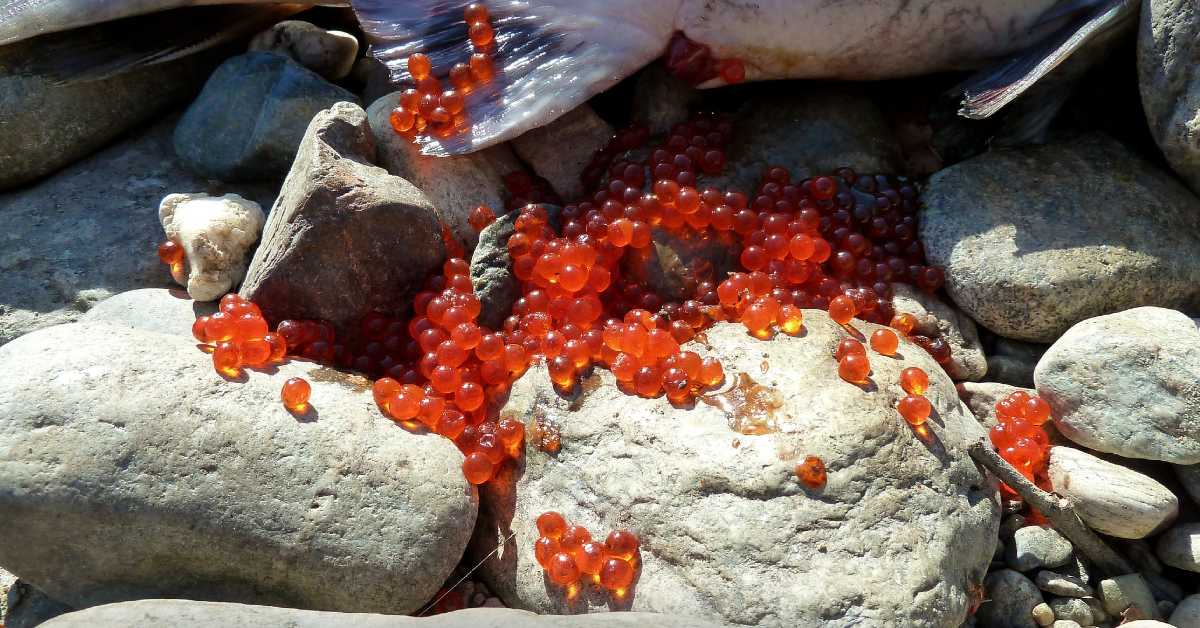
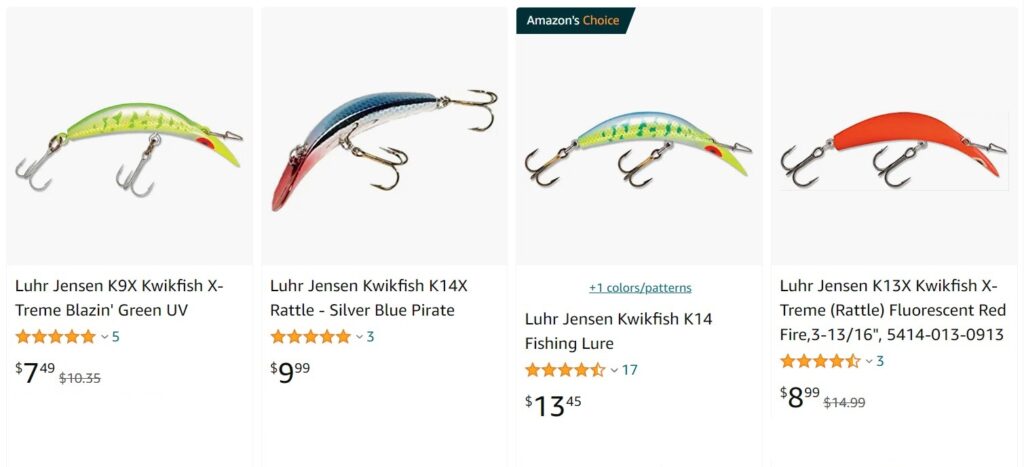
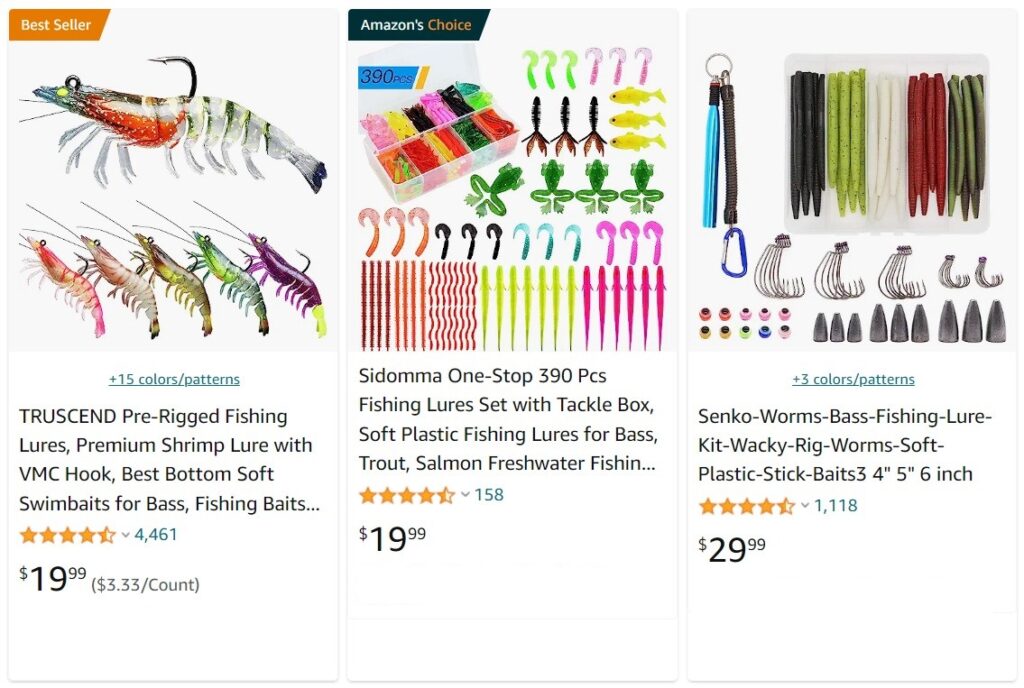
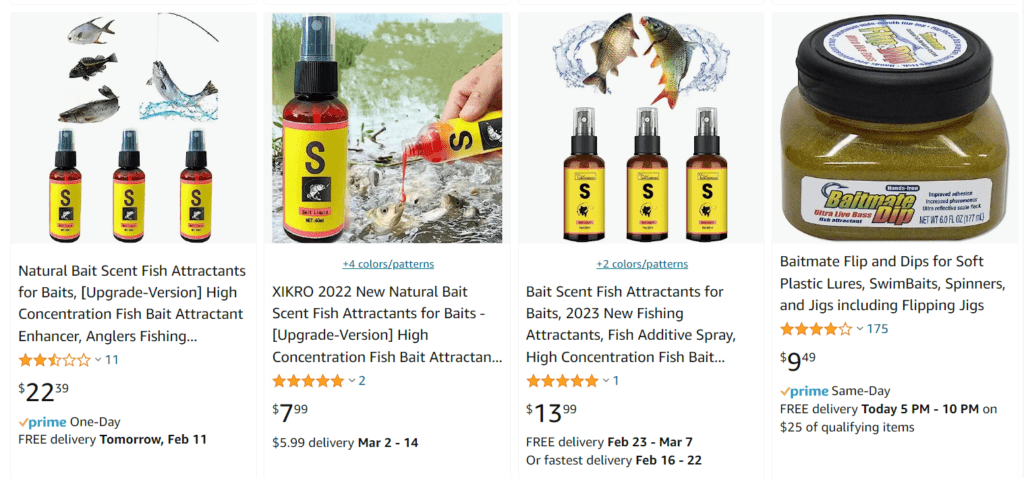
My father recently became interested in fishing as a hobby, so he was thinking of fishing for salmon next week since my mother loves eating them. I found it helpful when you informed us that salmon eggs are ideal bait since their scent can attract salmon during spawning season, while dough bait is a good alternative since they taste and smell the same as salmon eggs. I’ll make sure to inform my dad about this while he looks for a salmon fishing charter to book for his fishing trip soon.
Thank you!!